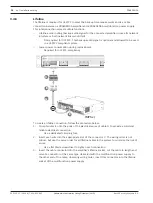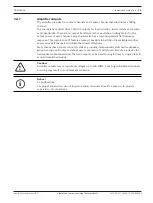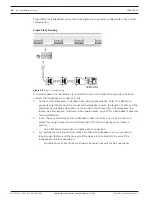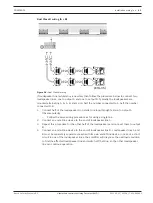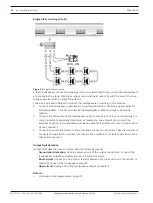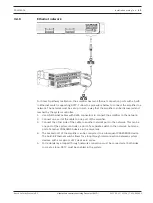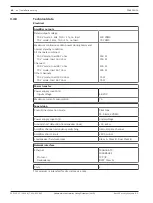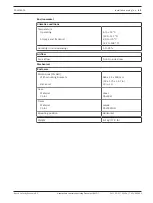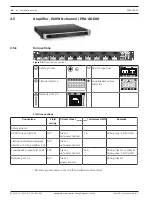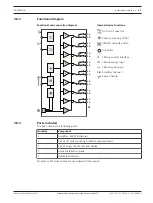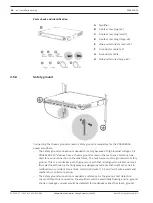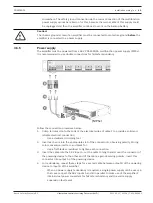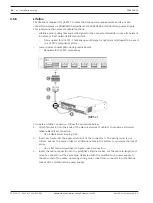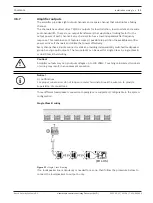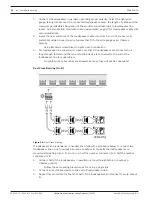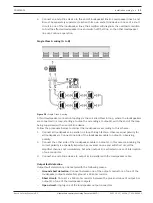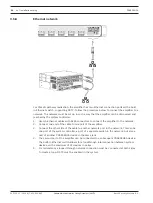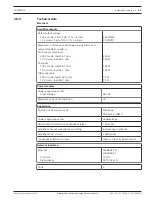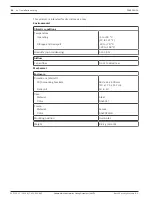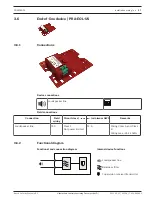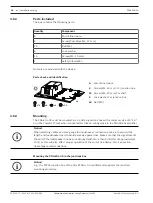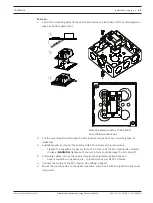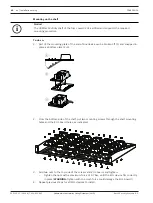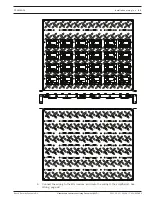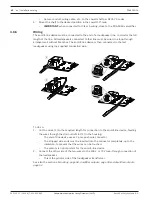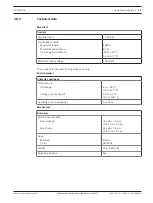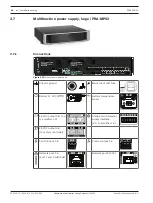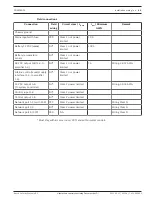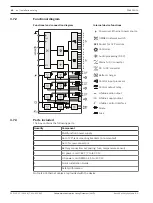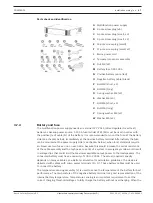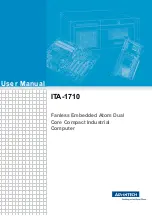
52
en | Installation wiring
PRAESENSA
2021.12.21 | V0.15b | F.01U.402.882
Underwriters Laboratories Listing Document (ULLD)
Bosch Security Systems B.V.
1.
Connect all loudspeakers in parallel, observing proper polarity. Select the right wire
gauge, taking into account the connected loudspeaker power, the length of cable and the
maximum permissible attenuation of the acoustic sound level due to loudspeaker line
losses. See also section
Field wire cable requirements, page 19 for loudspeaker cable size
recommendations.
2.
Insert the near end wires of the loudspeaker cable into slots 1 and 2 of connector D,
preferably using crimped on wire ferrules that fit to the wire gauge used. Observe
polarity.
–
Use a flat blade screwdriver to tighten each connection.
3.
For loudspeaker line supervision, make sure that all loudspeakers are connected in a
loop‑through fashion and that an end‑of‑line device is connected to the end of the
loudspeaker line for supervision.
–
No cable spurs or branches are allowed, because they will not be supervised.
Dual Class B wiring (A + B)
(EOL-US)
Figure 3.8:
Dual Class B wiring
If loudspeaker line redundancy is needed, then follow the procedure below to connect two
loudspeaker lines, one to output A and one to output B. Typically the loudspeakers are
mounted alternating A, B, A, B, and so on, half the number connected to A, half the number
connected to B.
1.
Connect half of the loudspeakers in parallel in a loop‑through fashion to output A.
Observe polarity.
–
Follow the same wiring procedure as for using a single line.
2.
Connect an end-of-line device to the end of loudspeaker line A.
3.
Repeat this procedure for the other half of the loudspeakers and connect them to output
B.

